Diversity, Pathogenicity and Drug Resistance of Medically Important Fungi
A special issue of Journal of Fungi (ISSN 2309-608X). This special issue belongs to the section "Fungal Pathogenesis and Disease Control".
Deadline for manuscript submissions: closed (10 September 2023) | Viewed by 8283
Special Issue Editor
Interests: oral microbiology; antifungal drug resistance; antifungal drug discovery; oral adhesion; Candida albicans
Special Issues, Collections and Topics in MDPI journals
Special Issue Information
Dear Colleagues,
Many fungi are opportunistic pathogens that cause infections when host defences are impaired. There are an increasing number of ways in which people are becoming immunocompromised. Medical treatments for cancer, immunosuppression for organ transplantation, the deterioration of immune defences due to ageing and stress on the immune system from other microbial infections, including COVID-19, can all have an effect on fungal infections. Therefore, it is important to have up-to-date information on the diversity of fungi causing infections in humans. While the pathogenicity of certain fungi has been extensively studied, there is a need to understand the pathogenesis of emerging fungal infections. Understanding how fungi cause disease and interact with host defences can inform the development of new drugs and novel treatment or prophylaxis as well as strategies. With the limited antifungal armamentarium currently available, understanding trends in the prevalence and nature of antifungal drug resistance is paramount. This Special Issue will collate important reports and reviews on the diversity of fungi currently causing fungal infections in humans, their pathogenicity, drug susceptibility and mechanisms of drug resistance.
Prof. Dr. Richard D. Cannon
Guest Editor
Manuscript Submission Information
Manuscripts should be submitted online at www.mdpi.com by registering and logging in to this website. Once you are registered, click here to go to the submission form. Manuscripts can be submitted until the deadline. All submissions that pass pre-check are peer-reviewed. Accepted papers will be published continuously in the journal (as soon as accepted) and will be listed together on the special issue website. Research articles, review articles as well as short communications are invited. For planned papers, a title and short abstract (about 100 words) can be sent to the Editorial Office for announcement on this website.
Submitted manuscripts should not have been published previously, nor be under consideration for publication elsewhere (except conference proceedings papers). All manuscripts are thoroughly refereed through a single-blind peer-review process. A guide for authors and other relevant information for submission of manuscripts is available on the Instructions for Authors page. Journal of Fungi is an international peer-reviewed open access monthly journal published by MDPI.
Please visit the Instructions for Authors page before submitting a manuscript. The Article Processing Charge (APC) for publication in this open access journal is 2600 CHF (Swiss Francs). Submitted papers should be well formatted and use good English. Authors may use MDPI's English editing service prior to publication or during author revisions.
Keywords
- emerging fungal diseases
- fungal diversity
- fungal disease prevalence
- pathogenesis
- fungal drug resistance






